Introduction by @backlin
Multiple simple plots can combined as panels in a single figure by using layout or par(mfrow=...). However, more complex plots tend to setup their own panel layout internally disabling them from being used as panels. Is there a way to create a nested layout and encapsulating a complex plot into a single panel?
I have a feeling the grid package can accomplish this, e.g. by ploting the panels in separate viewports, but haven't been able to figure out how. Here is a toy example to demonstrate the problem:
my.plot <- function(){
a <- matrix(rnorm(100), 10, 10)
plot.new()
par(mfrow=c(2,2))
plot(1:10, runif(10))
plot(hclust(dist(a)))
barplot(apply(a, 2, mean))
image(a)
}
layout(matrix(1:4, 2, 2))
for(i in 1:4) my.plot()
# How to avoid reseting the outer layout when calling `my.plot`?
Original question by @alittleboy
I use the heatmap.2 function in the gplots package to generate heatmaps. Here is a sample code for a single heatmap:
library(gplots)
row.scaled.expr <- matrix(sample(1:10000),nrow=1000,ncol=10)
heatmap.2(row.scaled.expr, dendrogram ='row',
Colv=FALSE, col=greenred(800),
key=FALSE, keysize=1.0, symkey=FALSE, density.info='none',
trace='none', colsep=1:10,
sepcolor='white', sepwidth=0.05,
scale="none",cexRow=0.2,cexCol=2,
labCol = colnames(row.scaled.expr),
hclustfun=function(c){hclust(c, method='mcquitty')},
lmat=rbind( c(0, 3), c(2,1), c(0,4) ), lhei=c(0.25, 4, 0.25 ),
)
However, since I want to compare multiple heatmaps in a single plot, I use par(mfrow=c(2,2)) and then call heatmap.2 four times, i.e.
row.scaled.expr <- matrix(sample(1:10000),nrow=1000,ncol=10)
arr <- array(data=row.scaled.expr, dim=c(dim(row.scaled.expr),4))
par(mfrow=c(2,2))
for (i in 1:4)
heatmap.2(arr[ , ,i], dendrogram ='row',
Colv=FALSE, col=greenred(800),
key=FALSE, keysize=1.0, symkey=FALSE, density.info='none',
trace='none', colsep=1:10,
sepcolor='white', sepwidth=0.05,
scale="none",cexRow=0.2,cexCol=2,
labCol = colnames(arr[ , ,i]),
hclustfun=function(c){hclust(c, method='mcquitty')},
lmat=rbind( c(0, 3), c(2,1), c(0,4) ), lhei=c(0.25, 4, 0.25 ),
)
However, the result is NOT four heatmaps in a single plot, but four separate heatmaps. In other words, if I use pdf() to output the result, the file is four pages instead of one. Do I need to change any parameters somewhere? Thank you so much!
